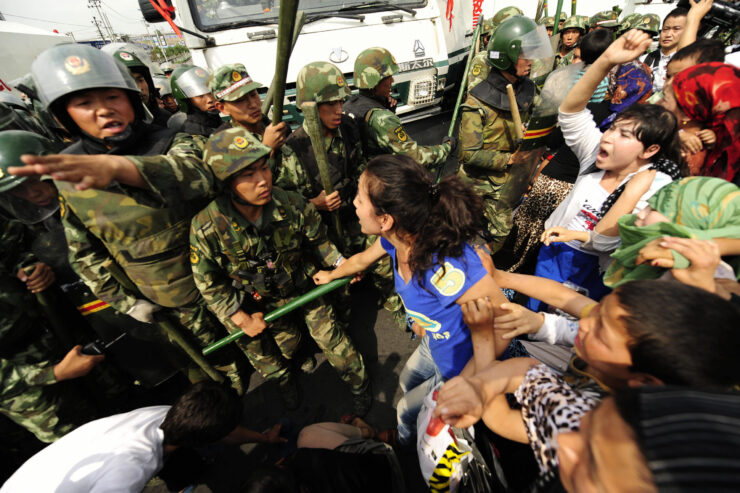
Foreign policy in today’s age is guided primarily by a combination of realism and pragmatism. This is exactly the case with India. The abstention of India at the United Nations Human Rights Council vote on the issue of China’s wanton human rights abuses against the Uighur people in its far western Xinjiang district is a case in point. China has faced global opprobrium over its brutal treatment of the Uighur people who belong to the Islamic faith. China has held over a million Uighur individuals in internment camps which Beijing says are camps meant to enable Uighur people to lead a better life. Beijing argues that it is sinicising Islam. However, leading newspapers, journals and news channels, including India’s first international news channel WION, have shown incriminating evidence in the form of interviews and videos that China has conducted genocide in Xinjiang.
Human rights often fall victim to cost-benefit analysis of national interests. All nation-states have at different points in time done this to suit their needs and interests. However, this action of India needs to be looked at from a broader perspective with a nuanced view.
From bonhomie to tension
Since June 2020, China-India ties have been strained thanks to Chinese transgressions in the eastern Ladakh border followed by the June 20 Galwan clash resulting in the deaths of 20 Indian soldiers and an unknown number of Chinese armed forces personnel. Since then, India has moved on the offensive, banning a large number of Chinese apps on the grounds that they represent strong security threats, and has moved to restrict investments from Chinese companies and corporations in an attempt to maintain ‘economic sovereignty’.
With Russia globally isolated, it is moving increasingly towards China and India. This Russia-India-China (RIC) axis looks to be very promising
China has responded in kind, it has ratcheted up the pressure in the Indian Ocean Region by dispatching a research and surveillance vessel Yuan Wang 5 which recently docked in the Hambantota port in Sri Lanka. Its debt trap diplomacy has put Sri Lanka and Nepal in dire economic straits with the countries struggling to service their foreign debt. The condition of Sri Lanka is far worse. At the same time in order to bolster its maritime prowess and show India its strength, the Chinese have inducted into active service its second aircraft carrier with the third one under construction.
Needless to say that ties have been strained. But not for long, both countries realised that strained ties between two Asian behemoths who are economically second and sixth largest in the world do not augur well for Asia’s stability and peace in general and global peace in particular. So both countries have moved to repair the damage in ties.
Restoring border tranquility
India and China have moved quickly to restore their trade ties, with imports and exports of India to China and vice-versa achieving historic levels
The first part of this reset began with restoring tranquillity at the border in eastern Ladakh. So far over 16 rounds of talks have been held between Indian and Chinese army commanders which have led to the mutual withdrawal of Indian and Chinese troops from friction points including Gogra Heights, Hot Springs, Chushul, and Moldo.
It has been regarded in Indian strategic circles that China cannot be trusted to restore calm at the border. But a proponent of political realism will invariably argue that in order to prevent anarchy it is imperative great powers take steps to cooperate with each other. This is exactly what both countries are doing.
It is hopeful that the border crisis will be resolved at the earliest without further loss of lives and the restoration of the vibrancy of the ties.

Consensus on the Russo-Ukraine affair
The Russo-Ukraine war has also caused a convergence of interests. Both China and India have resisted western pressures to call out Russia for its unbridled aggression against Ukraine. In fact, Russia has moved closer to China following its expulsion from SWIFT system. Yuan-Rouble transactions are at historic highs. India too hasn’t remained behind. It has defended its right to buy Russian oil at discounted rates at a time when global oil prices are sky-high. India in fact has reminded the West that it needs to grow out of its mindset that Europe’s problems are global problems.
It is time to make this century the Asian century because a reset in the ties of these two great civilisational states will set a template for similar resets around the world
India has refused to call out Russia directly for its actions in Ukraine, however, in a sign of a tightrope walk New Delhi has condemned the Bucha massacre and has called for an ‘impartial neutral investigation’.
With Russia globally isolated, it is moving increasingly towards China and India. This Russia-India-China (RIC) axis looks to be very promising. At the same time, India and China have moved quickly to restore their trade ties, with imports and exports of India to China and vice-versa achieving historic levels.
Optimism is the last word
In diplomacy it is necessary to remain optimistic; hence it is imperative that both countries make certain compromises on thorny issues. Both India and China talk about the Asian century. It is therefore time to make this century truly the Asian century because a reset in the ties of these two great civilisational states will set a template for similar resets around the world. Further, both countries must work together to tackle the global headwinds that are emerging out of the pandemic-ravaged world.
– The writer is currently working as a Research Associate at Defence Research and Studies (dras.in) and is a columnist. The views expressed are personal and do not necessarily reflect the views of Raksha Anirveda








